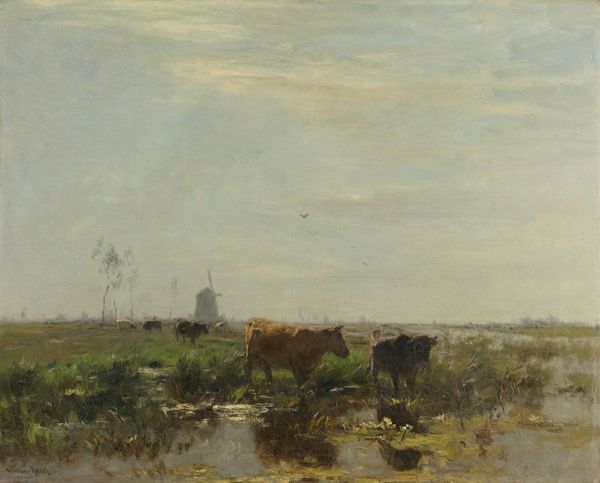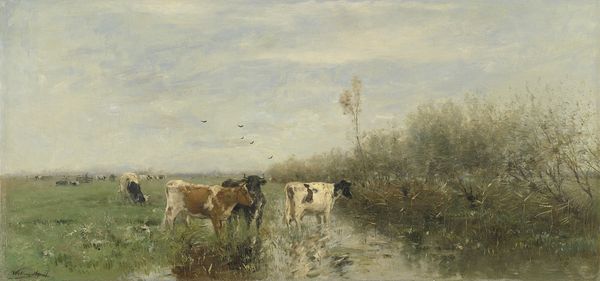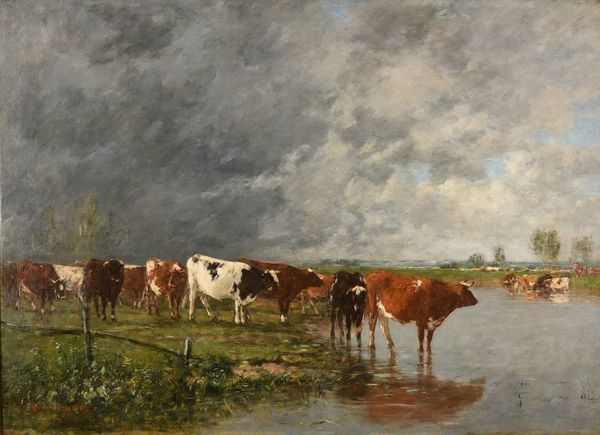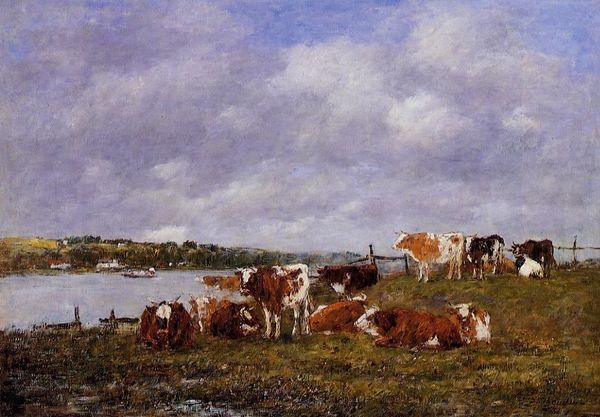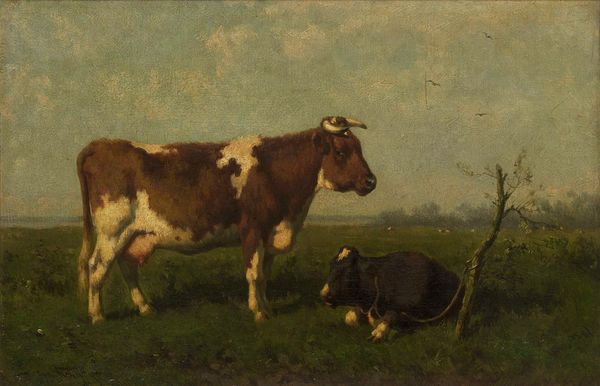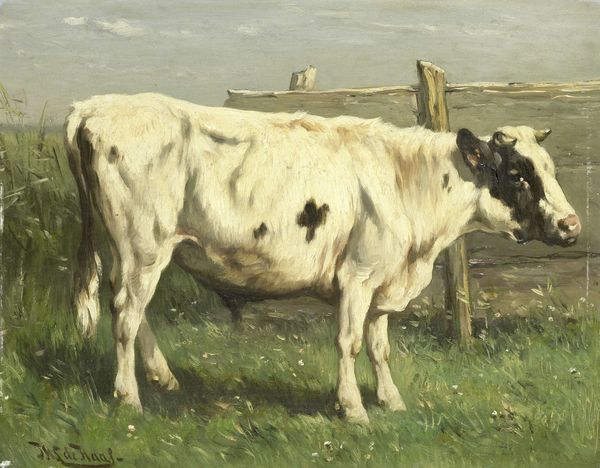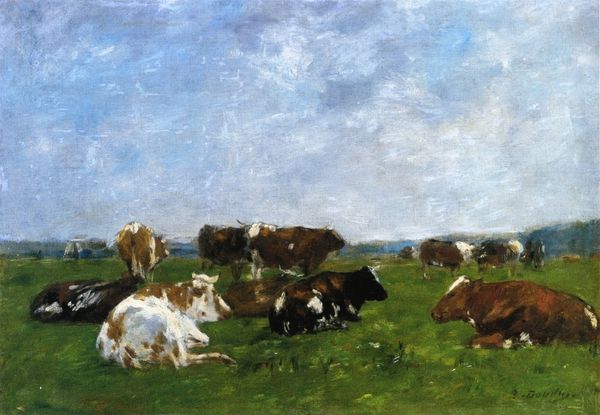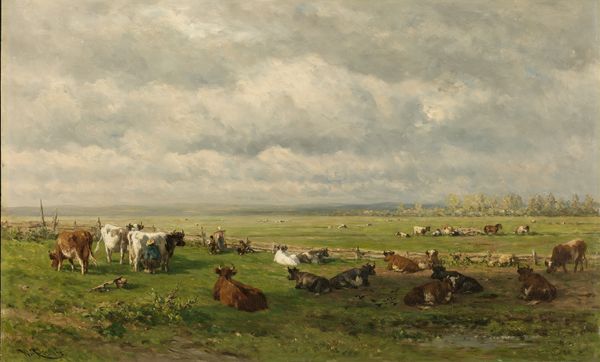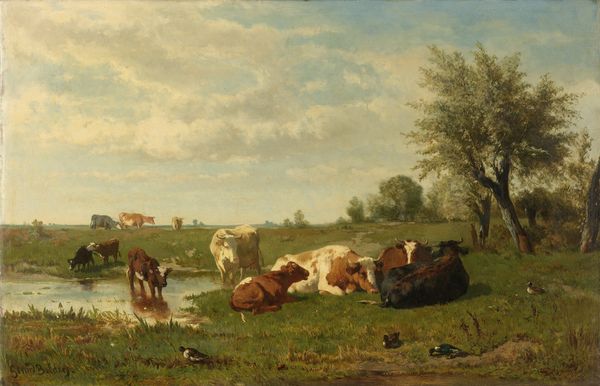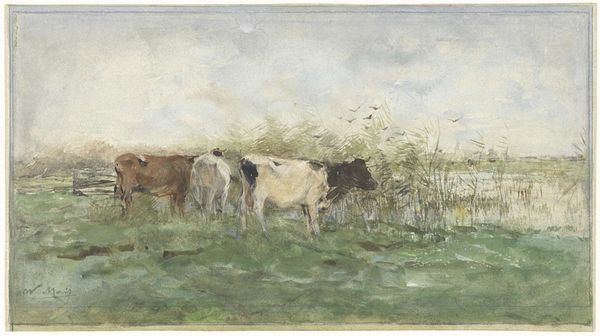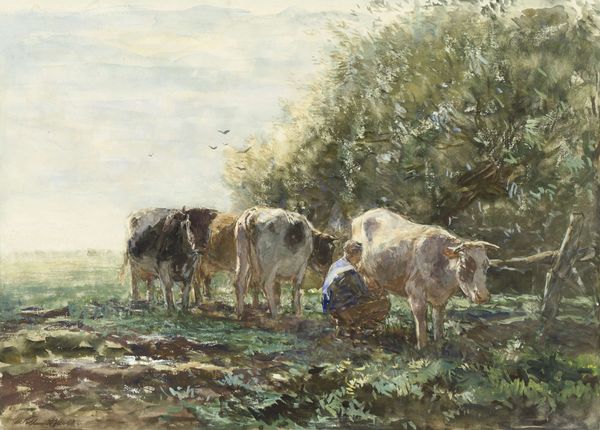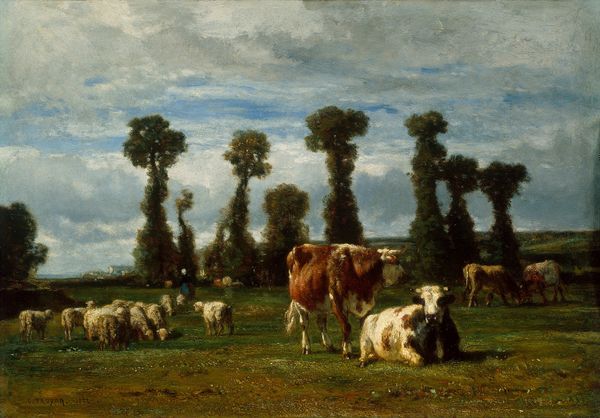
Dimensions: height 70.3 cm, width 95.7 cm, thickness 3 cm, depth 13.7 cm
Copyright: Rijks Museum: Open Domain
Curator: What a gentle scene. I feel myself exhale just looking at it. Editor: I can see that. There's an almost palpable sense of stillness in Bernardus Antonie van Beek's, "Cows in the Meadow". The oil paint lends a certain softness to the landscape. And while the piece dates to sometime between 1875 and 1941, I'm interested in how it might reflect rural life during a period of agricultural and industrial transition. Curator: Oh, absolutely. The cows almost look like they're posing, as if acutely aware of being observed. Van Beek had a playful eye. Look how the light bounces off their hides – it is such an informal rendering of rural contentment, isn't it? The little boat is gliding on the horizon; it almost hums with promise. The Impressionists really were attuned to subtle grace, I reckon. Editor: Exactly, that’s an angle often missed. These apparently simple depictions of livestock also signify a shift from agrarian feudalism. Van Beek’s impressionistic realism acknowledges the tensions between tradition and progress. How does labor change, and what happens to rural life in a quickly modernizing country? Are these cows representatives of capital, commodified into dairy production? Curator: That's so fascinating! I hadn't even considered it. They just seem to be enjoying the pastoral setting—being themselves. To me, these cows become metaphors for individual beings simply existing in a landscape not yet completely colonized by… us! They stand as small testaments of non-conformity to the demands of productivity and the capitalist engine. But I agree with your more astute analysis about them inevitably embodying the commodification of natural resources as our society has shifted toward industrialized production, though. Editor: It’s true that their serene poses may at first obscure the historical complexities involved. Looking at their postures, there’s certainly a sense of ease and tranquility, an undisturbed state—until now? It's important to look at artworks like this through many lenses and consider what is seen and what has been obscured. Curator: A marvelous point! I am going to leave this place thinking about cows from an utterly transformed perspective. How very grand. Thank you! Editor: My pleasure! It has offered new layers to unpack and more dimensions for reinterpreting art history, if nothing else.
Comments
No comments
Be the first to comment and join the conversation on the ultimate creative platform.
